Les Misérables
Why go to see another production of Les Mis by Packemin? Same director, same musical director, same leading stars? Same show?
Well, No! It’s not! It’s still Les Mis but it is a little different.
The set is different. So are the costumes. And director Luke Joslin has looked more deeply into Victor Hugo’s philosophy to frame his vision. The result is a production that captures Hugo’s reason for writing Les Misérables in the France of 1862 – “as long as ignorance and misery remain on earth, books like this cannot be useless”. It feels more real, more compelling … and in the world today, even more relevant.

The set, from CLOC Musical Theatre, gives Joslin the chance to realise that slightly darker vision for this production. High, dark flats enclose the stage, looming above the action and moving to create different angles and perspectives that allow for some spectacular lighting effects from designer Tom Wightwick. Costumes too, are a little different, not exactly sombre, but toned to be more in keeping with the mood – except for the Thénardiers, who are more colourful, and even more raunchy and raucous!
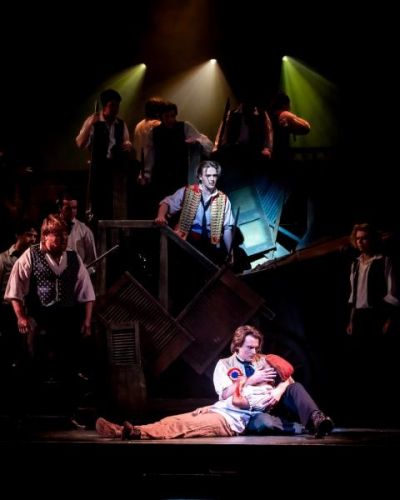
This set also gives Joslin the chance to innovate a little, resulting in some very special moments which, should I describe them, would spoil their poignancy. It is enough to say that the pathos of “Empty Chairs and Empty Tables” casts even more moving “phantom shadows”.
On this set, Joslin directs with a perceptive eye. He concentrates on distance and angles that give slightly different dimensions to the characters, especially Valjean and Javert. He sets them often in profile, still, the distance between them fixed as tightly as the friction in the words they sing.
Daniel Belle and Robert McDougall know those words and their characters well, but there is a different edge to the despair Belle gives to Valjean; a different malice in McDougall’s vengeful Javert. This makes the contrast between them stronger. It emphasises Joslin’s belief that Les Mis “asks what it means to be forgiven and what it means to be unforgiving”.
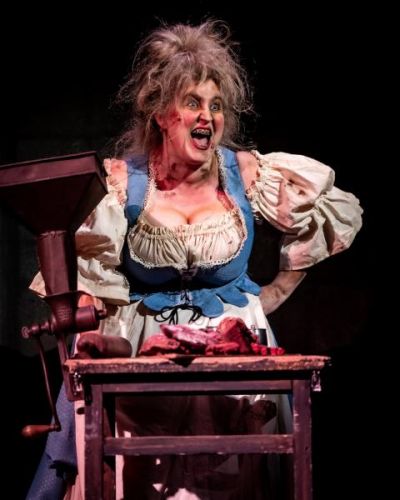 New to Packemin is recent Brent Street graduate Courtney Emmas, who plays Fantine. Her Fantine is a little darker, a little more damaged. It echoes in her voice and shows in the tautness of her actions. With Joslin’s guidance Emmas finds a colder, more feminist Fantine that makes her decision to release Cosette to Valjean’s care seem a little harder for her.
New to Packemin is recent Brent Street graduate Courtney Emmas, who plays Fantine. Her Fantine is a little darker, a little more damaged. It echoes in her voice and shows in the tautness of her actions. With Joslin’s guidance Emmas finds a colder, more feminist Fantine that makes her decision to release Cosette to Valjean’s care seem a little harder for her.
Garth Saville and Emily Kimpton are the lewd, lascivious Thénardiers. The change of pace these two bring is always welcome, and Saville and Kimpton make the most of the avarice and cunning of these two mischievous characters. Their colourful costumes and coarse boisterousness in “Master of the House” bring bright respite – until their abusive treatment of little Cosette dulls the brightness.
At the Barricade Marius (Brenton Bell), Enjolras (Tom Kelly) and their friends “raise the flag of freedom high” in a turmoil of song and farewells and gunfire. Sound effects (Chris Neal) and Tom Wightwick’s flashing lights raise the frenzy of this scene (and keep the operators busy) until the battle is lost and “these people’s heroes” are no more.
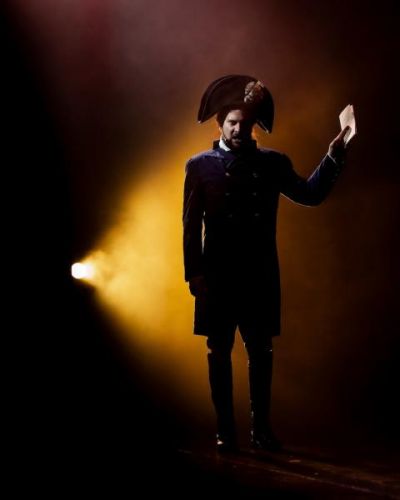 This scene is always exciting, and Tom Kelly leads it in this production with the strength of a powerful voice and the fiery fervour of rebellious youth.
This scene is always exciting, and Tom Kelly leads it in this production with the strength of a powerful voice and the fiery fervour of rebellious youth.
Brenton Bell finds a different passion as Marius. The Marius he plays in this production is gentler, more introspective, more youthfully naïve. He shows that naivety as he falls so quickly in love with Cosette – and his innocent acceptance of Eponine’s love. He shows his gentleness in his expressive voice and face as he holds Eponine keeping her “close” … until her “night is over”.
Georgia Burley reprises her 2020 role as Cosette. With the memory of her life with the Thénardiers erased by the shield of Valjean’s protection, Cosette is gentle and accepting, but lonely and inquisitive. Burley finds all of this in a quiet, giving performance.
That gentleness contrasts sharply with the Eponine created by Daniella Delfin. Delfin fuses the harshness of Epinine’s background with the strength of self-belief and awareness – and the power of unrequited love.
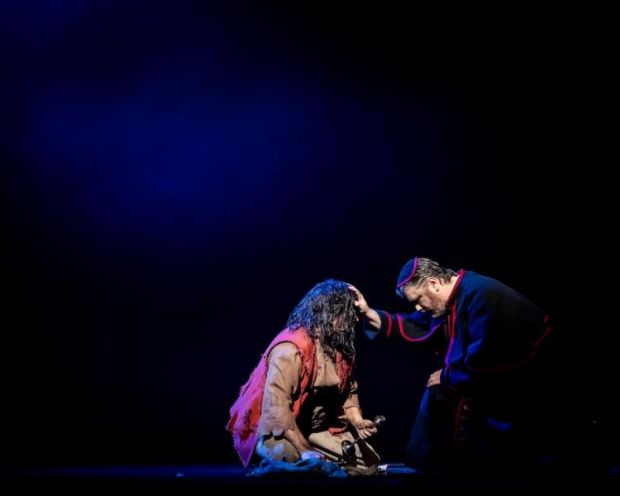 Together they epitomise the two sides of the Revolution: Cosette’s “castle on a cloud” and Eponine’s miserable life on the streets.
Together they epitomise the two sides of the Revolution: Cosette’s “castle on a cloud” and Eponine’s miserable life on the streets.
Six young performers play “little” Cosette and Eponine, and the daring young Gavroche. They take the stage confidently and must relish this opportunity to work with such a professional and supportive cast.
That cast is made up of forty-one talented and highly trained performers who play a range of characters that move seamlessly from the streets of Paris to Valjean’s factory, the Thénardiers’ inn and the barricade. Every character is strong and believable. Their ensemble work is tight and tense. Whether singing or dancing, they show the power of diligent rehearsal. Their musical director, Peter Hayward, guides them and his orchestra with a very experienced and caring hand.
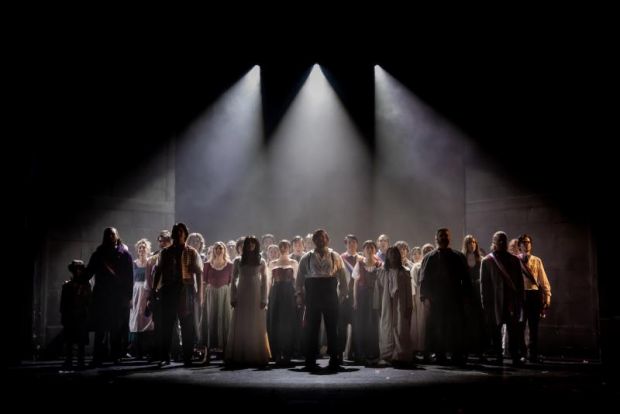
Les Misérables returns to Riverside with all its usual power and passion. Alain Boubil’s adaptation of Victor Hugo’s story, Claude-Michel Schönberg’s music and Herbert Kretzmer’s compelling lyrics reach over 160 years to take us back to a time of tumult and social unrest, so different to today …. Or is it? “Plus ça change, plus c'est la même chose” …
Don’t miss this production – that is, if you can get a ticket!
Carol Wimmer
Photographer: Grant Leslie
Subscribe to our E-Newsletter, buy our latest print edition or find a Performing Arts book at Book Nook.

